The journey to understanding Racialized Hair Bias is a deeply resonant exploration, touching upon the very essence of identity, community, and ancestral legacy. It is a concept not merely confined to discriminatory acts or policies but extends into the subtle, pervasive devaluation of textured hair. This devaluation traces its lineage back through centuries of societal conditioning, firmly planting roots in the ground of Eurocentric beauty standards. For those who carry the heritage of Black and mixed-race hair experiences, this bias often represents a quiet battle fought on the scalp and within the spirit.
Roothea stands as a living archive, a place where the whisper of ancient traditions meets the clarity of scientific discovery. Our purpose rests upon illuminating the profound connections between elemental biology, time-honored practices, and the modern interpretations of beauty, resilience, and belonging that resonate within every strand. This exploration of racialized hair bias consistently reflects its journey ❉ “Echoes from the Source” reveals its elemental origins, “The Tender Thread” navigates living traditions of care and community, and “The Unbound Helix” considers its role in voicing identity and shaping futures. Our path forward unfolds with profound respect for the intricate legacy of textured hair.

Fundamentals
Racialized Hair Bias, at its most elemental, describes the systematic prejudice and disadvantage directed towards individuals based on their hair texture, particularly when that texture deviates from Eurocentric norms. This bias is not an arbitrary preference; it arises from historical and societal constructs that have long associated straight, smooth hair with notions of professionalism, beauty, and even intelligence, while simultaneously devaluing and marginalizing hair that naturally coils, kinks, or braids. It is an imposition of a singular aesthetic ideal onto a diverse spectrum of human hair, especially impacting individuals of Black and mixed-race heritage. The underlying meaning of this bias signifies a deeply ingrained societal discomfort, sometimes an outright rejection, of hair that authentically expresses African ancestry.
The experience often begins subtly, a quiet observation, a whispered remark, a feeling of unease in spaces where one’s natural hair stands as a visible marker of difference. This sentiment carries the weight of generations, an inherited understanding that hair, which should be a source of joy and self-expression, can instead become a point of vulnerability. For many, the bias manifests as a pressure, sometimes unspoken, to alter one’s hair through chemical relaxers, excessive heat, or tightly pulled styles to conform to perceived standards. Such pressures can lead to both physical damage to the hair and scalp, alongside significant psychological distress.
Racialized Hair Bias represents a systemic devaluation of natural, textured hair, rooted in historical and societal constructs that favor Eurocentric beauty ideals.
Consider the simple act of a child attending school. Policies, seemingly neutral on paper, often prohibit what are termed “extreme” or “distracting” hairstyles. Such policies disproportionately target styles intrinsic to Black culture, like dreadlocks, braids, or afros. A nine-year-old named Ava Russell was sent home from school for wearing her curls down, and Deandre Arnold was prevented from participating in his high school graduation ceremony because of his locs.
These instances, while seemingly isolated, form a pattern of denial, subtly communicating that one’s authentic self, especially when expressed through hair, is somehow unacceptable within mainstream institutions. The implication is clear ❉ to belong, one must diminish or conceal a part of their inherent heritage.
The core definition of Racialized Hair Bias lies in its mechanism of exclusion. It functions as a gatekeeper, determining who is perceived as acceptable, professional, or worthy in various spheres of life, from educational institutions to workplaces. This bias frequently ignores the biological reality of textured hair, its unique needs for care, and the rich traditions of styling that have evolved over millennia as forms of self-expression, communication, and communal bonding. It compels individuals to navigate a world where their natural crowning glory is often viewed through a lens of judgment, rather than appreciation.
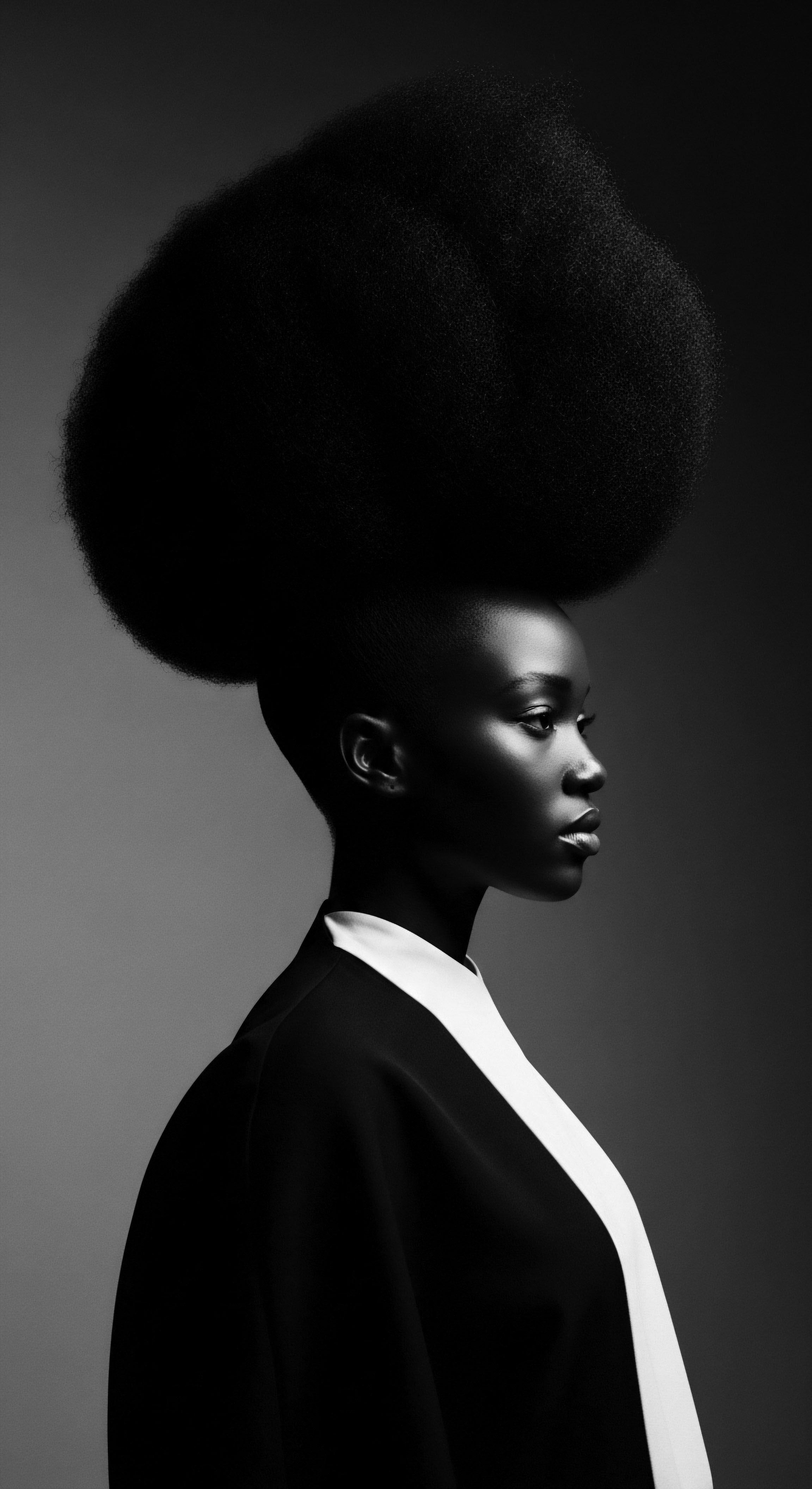
Historical Echoes of Devaluation
The origins of this bias are not a recent phenomenon. They can be traced back to the era of chattel enslavement, where deliberate efforts were made to strip enslaved Africans of their cultural identity. Hair, which had been a powerful marker of status, tribe, and spiritual connection in many African societies, became a site of denigration and control.
Enslaved individuals were often forced to cover their hair or adopt styles that mimicked those of their enslavers, severing visible links to their ancestral homelands and collective memory. This forced assimilation laid the groundwork for the insidious idea that natural Black hair was “unruly,” “unclean,” or “unprofessional.” The pervasive negative evaluation was deeply tied to the institution of slavery and its depictions of people of African descent.
Post-emancipation, the “good hair” versus “bad hair” dichotomy persisted, further internalizing these damaging ideals within Black communities themselves. “Good hair” typically referred to hair that possessed characteristics closer to European textures, such as straighter, finer strands, while “bad hair” denoted hair that was more coily, kinky, or tightly textured. This internal hierarchy, a painful legacy of oppression, reinforced the notion that proximity to whiteness, even in one’s hair, equated to higher social value and opportunity.
The widespread adoption of chemical relaxers and hot combs became a common practice, not simply for aesthetic reasons, but as a survival strategy, a means to navigate and conform to a society that rewarded Eurocentric appearances. These historical pressures have left a lasting imprint, shaping perceptions and experiences even in the contemporary world.

Intermediate
Moving beyond its fundamental meaning, Racialized Hair Bias represents a complex interplay of historical oppression, socio-cultural conditioning, and deeply embedded aesthetic hierarchies. It embodies a form of systemic discrimination where the intrinsic characteristics of textured hair – its distinct curl patterns, its volume, its protective capabilities – are unfairly pathologized, leading to prejudice and exclusion. The significance of this bias extends beyond surface-level appearance; it infiltrates personal identity, educational access, and professional advancement, particularly for individuals of African descent. This pervasive prejudice is not an accidental byproduct; it is a direct consequence of centuries of colonial legacies and the imposition of a singular, white-normative beauty standard across global societies.
The historical narrative of Black hair, stripped of its ancestral reverence during the transatlantic slave trade, witnessed an intentional campaign to dismantle its cultural meaning. Hair, once a sacred canvas denoting tribal affiliation, marital status, age, and spiritual connection in various African societies, became a symbol of subjugation. Enslaved Africans were deprived of their traditional tools and practices, forcing them to neglect or alter their hair in ways that diminished their sense of self and community.
This enforced neglect and later, the pursuit of “straight” hair, served as a painful, albeit sometimes necessary, strategy for survival within oppressive systems. The very act of caring for hair, which had been a communal ritual, transformed into a solitary, often clandestine, endeavor.
Racialized Hair Bias, a deeply ingrained form of discrimination, systematically pathologizes textured hair, reflecting centuries of Eurocentric beauty imposition.
The meaning of hair in Black diasporic communities thus became doubly layered ❉ a connection to a lost past and a negotiation of a hostile present. This dualistic existence highlights the profound effect of racialized hair bias. It forced a choice, conscious or unconscious, between authenticity and perceived acceptance. The notion of “good hair” and “bad hair,” terms born from this brutal history, continues to echo through generations, a painful inheritance that juxtaposes Indigenous beauty against imposed ideals.
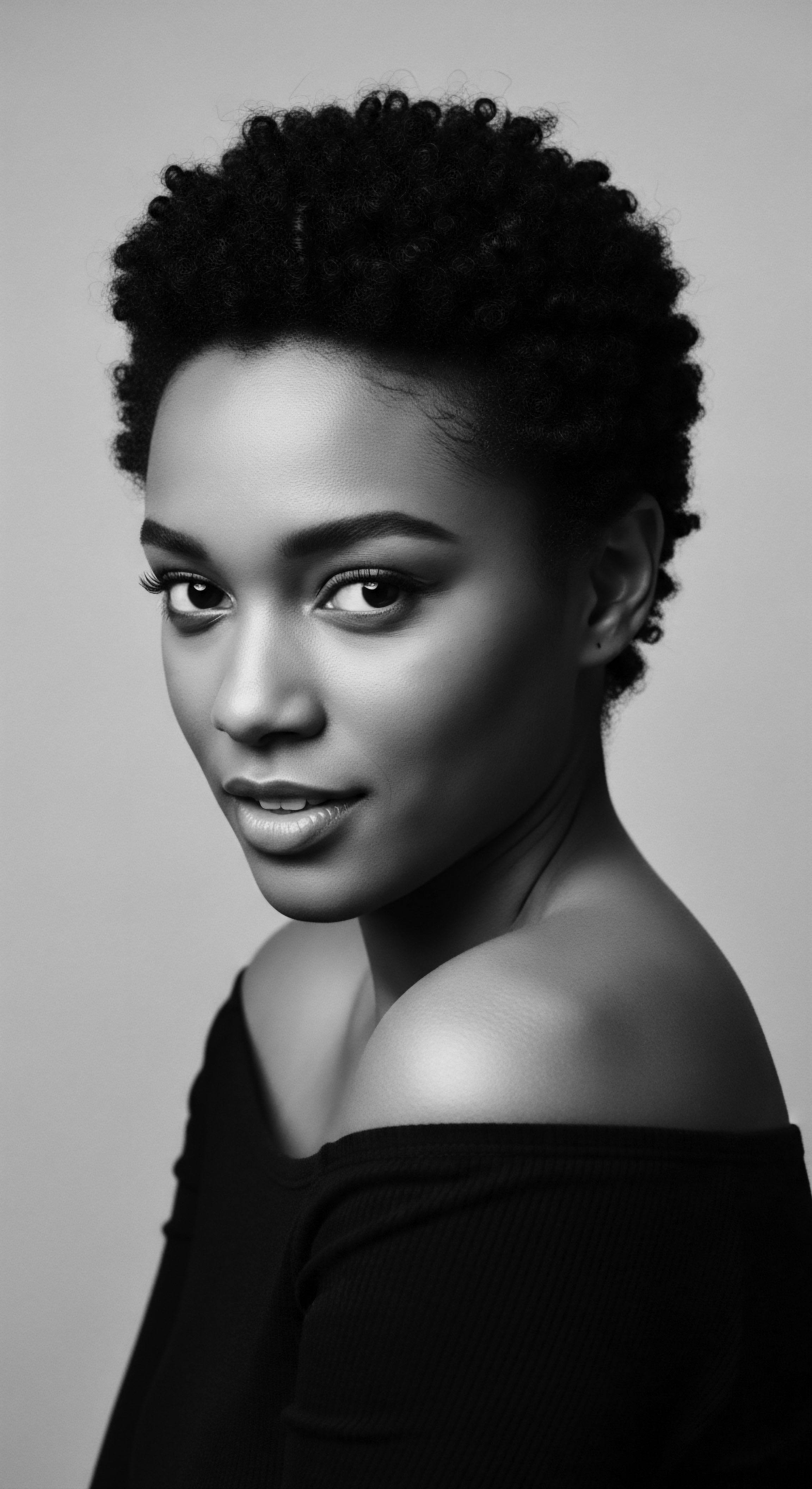
Cultural Disconnect and Identity Negotiation
The impact of racialized hair bias on individual identity and well-being is considerable. Many Black individuals report feeling pressure to conform to Eurocentric hair standards to be perceived as professional or acceptable in mainstream settings. This often involves altering their natural hair texture, a practice that can provoke feelings of inauthenticity and internal conflict.
The constant negotiation of one’s appearance, deciding whether to wear natural styles or to straighten hair, represents a form of psychological burden. This burden is particularly pronounced in educational and professional environments where unwritten codes of conduct often penalize natural Black hairstyles.
- The “Professional” Standard ❉ Hair deemed “professional” often correlates with Eurocentric characteristics, excluding natural Afros, braids, or locs. This creates an unspoken barrier for Black individuals in corporate spaces.
- Microaggressions and Surveillance ❉ Individuals with textured hair frequently face inappropriate comments, unsolicited touching, and questions about their hair’s authenticity, leading to feelings of being “othered” and scrutinized.
- Internalized Bias ❉ Exposure to negative perceptions can lead to internalized racism, where individuals might begin to devalue their own natural hair and, by extension, parts of their racial identity.
The very act of wearing one’s hair in its natural state becomes a political statement, a quiet act of rebellion against historical suppression. This resistance has spurred movements like the “Black is Beautiful” movement of the 1960s and 70s, and the contemporary Natural Hair Movement. These cultural shifts aimed to reclaim and celebrate the intrinsic beauty of Black hair, transforming it from a site of shame into a symbol of pride and self-acceptance. These movements recognize that hair is not merely an aesthetic choice; it is a declaration of selfhood, a connection to lineage, and a profound aspect of cultural heritage.
| Era/Context Meaning & Purpose |
| Traditional African Societies (Pre-Colonization) Hair as a spiritual conduit, social marker (status, age, tribe), artistic expression, and sign of fertility or mourning. |
| Colonial/Post-Slavery Era Hair as "unprofessional," "unruly," "woolly," a marker of inferiority, and a target for forced assimilation. |
| Era/Context Care Practices |
| Traditional African Societies (Pre-Colonization) Communal rituals, use of natural oils, herbs, and intricate braiding techniques often passed down through generations. |
| Colonial/Post-Slavery Era Emphasis on straightening (relaxers, hot combs) to mimic Eurocentric textures; neglect or chemical damage common. |
| Era/Context Societal Value |
| Traditional African Societies (Pre-Colonization) Highly revered; intricate styles signified wisdom, power, and belonging within community structures. |
| Colonial/Post-Slavery Era Devalued; associated with poverty, lack of education, and resistance to "civilization." |
| Era/Context This table illustrates the stark shift in the interpretation and value of Black hair, from a cherished aspect of identity to a symbol of racialized devaluation, reflecting profound cultural imposition. |
The ongoing struggle for hair liberation, often championed by communities of color, seeks to dismantle these ingrained biases. It strives for a future where hair is understood and celebrated in all its forms, free from the constraints of discriminatory standards. This ongoing work is a testament to the enduring power of ancestral knowledge and the resilience of those who carry it.
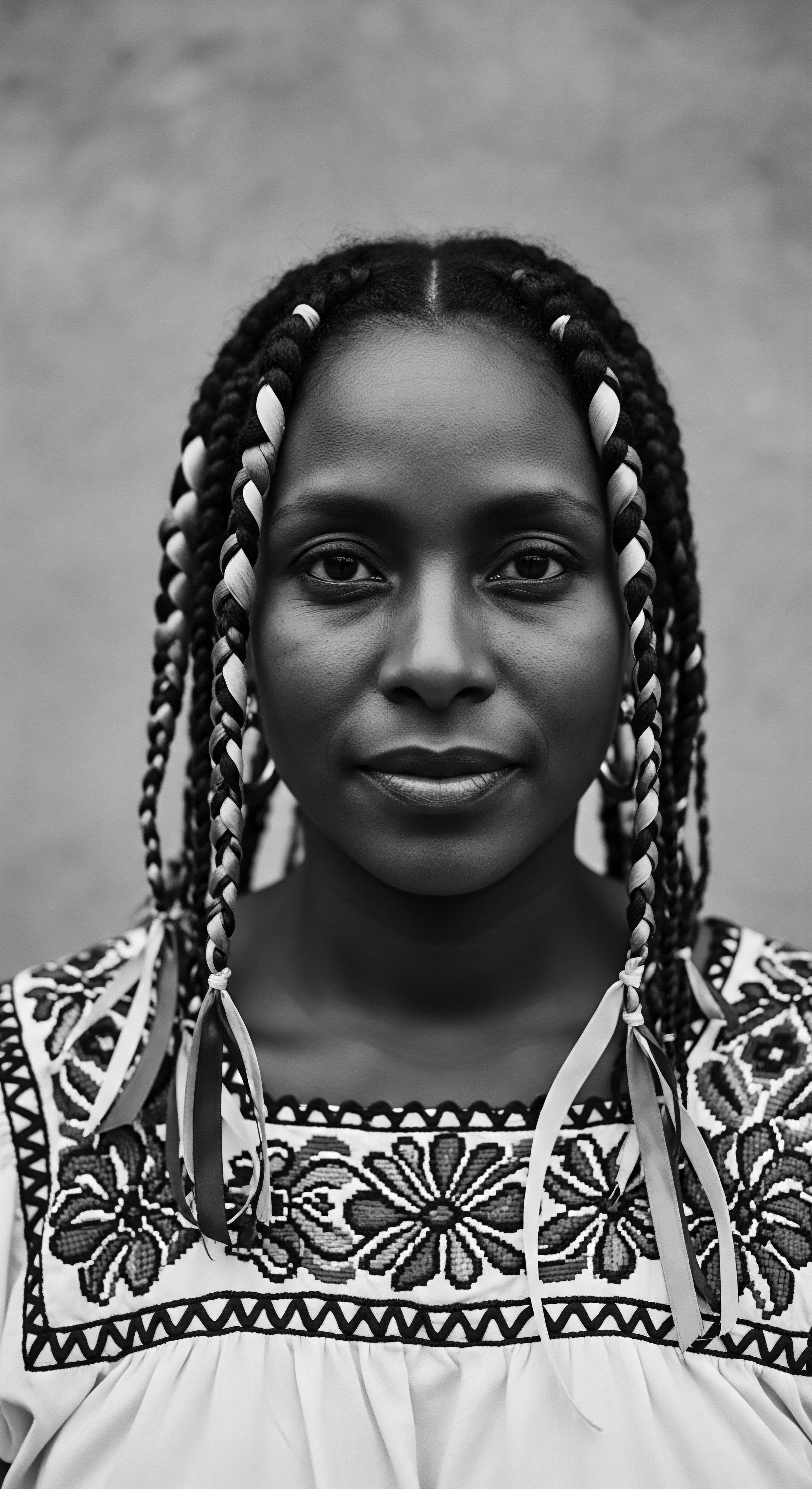
Academic
At an academic level, Racialized Hair Bias can be delineated as a socio-cultural phenomenon rooted in systemic oppression, where the phenotypic characteristics of hair, specifically its texture, density, and natural styles, become grounds for discrimination, disproportionately affecting individuals of African, Afro-diasporic, and mixed heritage. This bias serves as a mechanism of social control, enforcing hegemonic Eurocentric aesthetic norms and maintaining power imbalances across various institutional contexts, including employment, education, and social interactions. Its underlying theoretical framework frequently draws from critical race theory, intersectionality, and post-colonial studies, revealing how seemingly benign grooming policies contribute to the perpetuation of racial hierarchy and psychological distress. The term encapsulates the historical process through which African hair, once imbued with spiritual, social, and cultural significance, was systematically devalued, reframed as “unprofessional” or “unclean,” and subsequently subjected to overt and covert policing within Western societies and their spheres of influence.
The meaning of this bias extends beyond mere aesthetic preference; it is a manifestation of internalized racism and a tool for identity suppression. Research indicates that the devaluation of Black hair by Black people themselves represents a psychologically damaging outcome, resulting from years of socialization that positions white aesthetics as the cultural standard. This creates a profound internal conflict, compelling individuals to navigate the tension between authentic self-expression and societal expectations of conformity.
Racialized Hair Bias functions as a mechanism of social control, enforcing Eurocentric aesthetic norms and perpetuating racial hierarchy, deeply affecting identity and well-being.
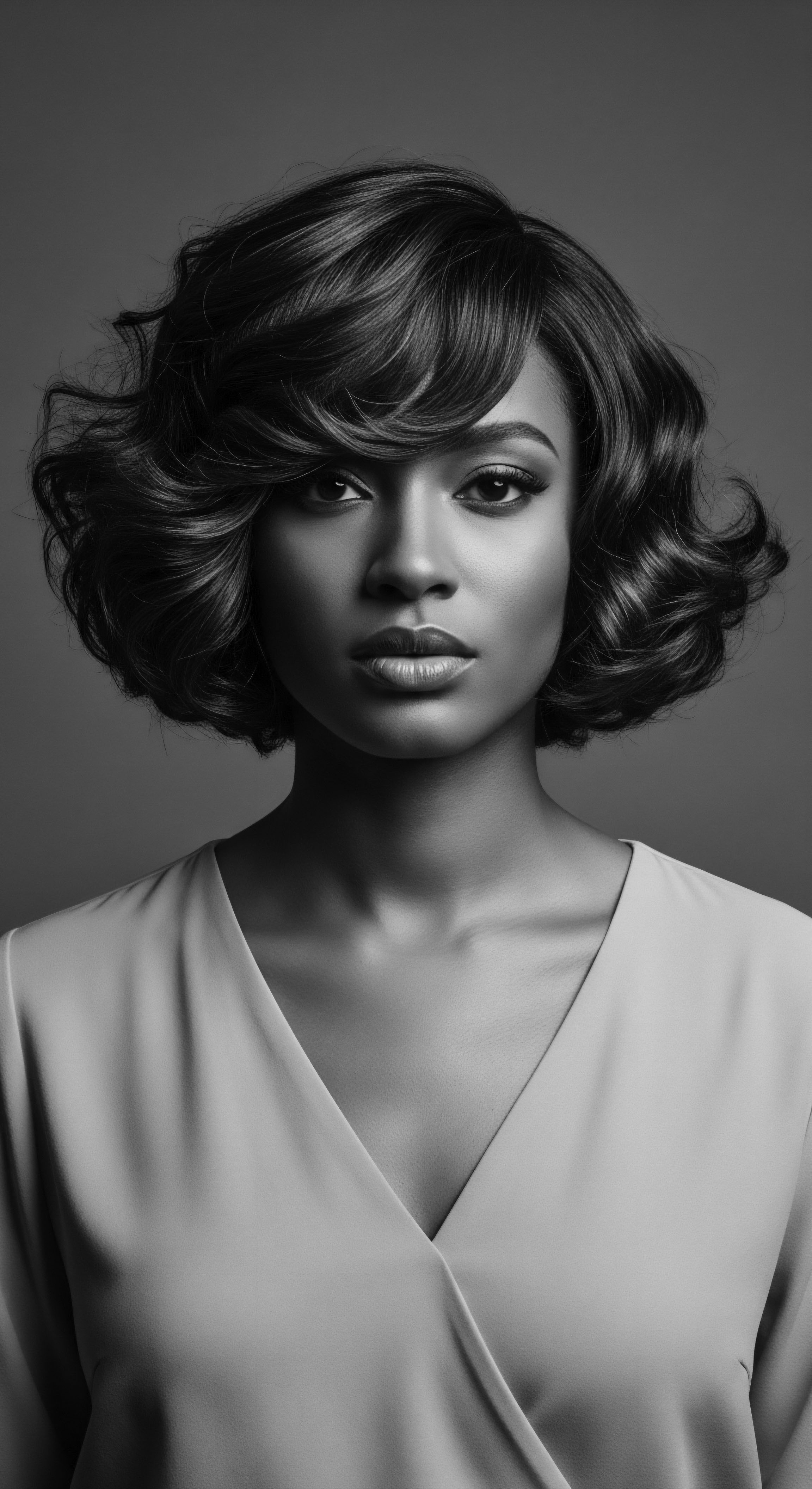
Socio-Economic and Psychological Ramifications
The ramifications of racialized hair bias are far-reaching, extending into critical areas of socio-economic mobility and psychological well-being. It is here that the bias unveils its more insidious impact, affecting career trajectories and mental health. A significant body of research highlights how natural Black hairstyles are often perceived as less professional, leading to tangible disadvantages in job recruitment and workplace advancement. For instance, a 2020 study by Duke University’s Fuqua School of Business found that Black women with natural hairstyles, such as curly afros, braids, or twists, were perceived as less professional and were recommended for interviews less frequently than Black women with straightened hair or white women with any hair texture.
This empirical evidence underscores how deeply embedded the societal bias against natural Black hairstyles has become within professional settings. The study further revealed that this discrimination was particularly pronounced in industries with more conservative dress norms, like consulting, compared to more creative fields such as advertising.
This phenomenon is not isolated to initial hiring; it extends into the daily realities of the workplace. Black women with coily or textured hair are twice as likely to experience microaggressions at work compared to Black women with straighter hair. Moreover, over 20% of Black women between the ages of 25 and 34 have been sent home from their jobs due to their hair.
Such disciplinary actions can culminate in job termination or hinder advancement to higher positions, resulting in significant economic consequences and limiting opportunities for career growth. The implicit bias often manifests in subtle behaviors, probing questions about authenticity, or unsolicited touching, making Black individuals feel objectified and marginalized, impacting their sense of belonging.
The psychological toll is equally significant. Individuals affected by hair bias frequently report negative impacts on self-esteem and overall psychological well-being. The pressure to alter natural hair, which for many is a deeply personal expression of identity, can lead to feelings of inauthenticity and internal conflict. Constant hypervigilance regarding how one’s hair is perceived, chronic stress in academic or professional environments, and feelings of cultural disconnection are frequently reported mental health consequences.
For some, this stress even contributes to hair loss, creating a cyclical burden where the effort to conform causes physical harm, compounding emotional distress. The choices Black women make about their hair are imbued with meanings beyond mere aesthetics, often serving as a means to navigate and counter the separation brought about by colonization and its enduring effects.
| Aspect of Bias Perception of Professionalism |
| Manifestation & Data Black women's hair is 2.5 times more likely to be perceived as "unprofessional" compared to white women's hair. |
| Aspect of Bias Job Interview Outcomes |
| Manifestation & Data Approximately two-thirds (66%) of Black women alter their hair for job interviews, with 41% changing from curly to straight. Black women are 54% more likely to believe they must wear their hair straight to be successful in interviews. |
| Aspect of Bias Workplace Microaggressions |
| Manifestation & Data Black women with coily or textured hair are twice as likely to experience microaggressions at work. |
| Aspect of Bias Disciplinary Actions & Job Loss |
| Manifestation & Data Over 20% of Black women aged 25-34 have been sent home from work due to their hair. Some individuals have had job offers rescinded or lost employment due to refusal to cut or change natural styles. |
| Aspect of Bias This table presents specific data points illustrating the concrete, measurable disadvantages and challenges faced by Black women in professional environments due to racialized hair bias. |
The emergence of legislative efforts, such as the CROWN (Creating a Respectful and Open World for Natural Hair) Act in the United States, represents a contemporary response to this deeply entrenched bias. This legislation aims to amend existing anti-discrimination laws to explicitly include traits historically associated with race, like hair texture and protective styles. While the CROWN Act has seen success at state levels and passed the U.S. House of Representatives multiple times, its full federal enactment remains an ongoing endeavor.
These legal battles underscore the enduring need to dismantle policies, explicit or implicit, that penalize ancestral hair expressions and compel conformity to a singular, racially coded beauty standard. The historical context of this legislative need is also evident in past court rulings that favored employers who disciplined or terminated employees for wearing braids or cornrows, such as the 1981 Rogers v. American Airlines case.
The academic understanding of racialized hair bias reveals a profound societal problem, one that actively undermines equity and perpetuates systemic disadvantage. It is a lens through which to comprehend the sustained efforts to control and define Black identity, moving from physical bondage to subtle forms of aesthetic subjugation. The ongoing scholarly inquiry into this area continues to deepen our comprehension of the social construction of beauty, the pervasive nature of implicit bias, and the enduring resilience of cultural heritage in the face of adversity. This critical examination necessitates a recognition of how hair, far from being merely cosmetic, functions as a powerful site for negotiating race, gender, class, and belonging.

Ancestral Practices and Cultural Resistance
Beyond the academic analyses of harm, there is also the profound study of how ancestral practices become acts of cultural resistance and reclamation against this bias. In pre-colonial African societies, hair care rituals were not simply about hygiene or vanity; they were profound acts of communal bonding, spiritual reverence, and cultural transmission.
- Ceremonial Significance ❉ Hairstyles conveyed significant life stages, such as rites of passage, marital status, or mourning periods. Hair was often considered a conduit to the divine, positioned on the highest part of the body.
- Intricate Techniques as Knowledge Systems ❉ Braiding, twisting, and coiling methods were complex mathematical and artistic expressions, passed down through generations. These techniques represented sophisticated knowledge systems, embodying a “grammar of hair” that allowed for communication and connection across the diaspora.
- Natural Ingredients and Holistic Care ❉ Ancestral hair care involved a deep understanding of natural elements, utilizing plant-based oils, butters, and herbs for nourishment, strength, and scalp health. This holistic approach recognized the intrinsic link between hair wellness and overall well-being.
The persistence of these practices, even in fragmented forms, within diasporic communities speaks to an unbroken thread of heritage. Despite attempts to sever these connections, the intentional choice to wear natural hair or protective styles today—like locs, braids, or bantu knots—is a powerful reclaiming of cultural identity and a rejection of imposed beauty ideals. These styles become a declaration of lineage, a visible affirmation of Blackness, and a living testament to the resilience of ancestral wisdom.
They challenge the very foundations of racialized hair bias by celebrating what was once denigrated, transforming symbols of presumed inferiority into icons of pride and authenticity. This ongoing movement highlights that the fight against hair bias is not merely about personal preference; it is about the right to cultural expression, self-determination, and the honoring of a rich, enduring heritage.
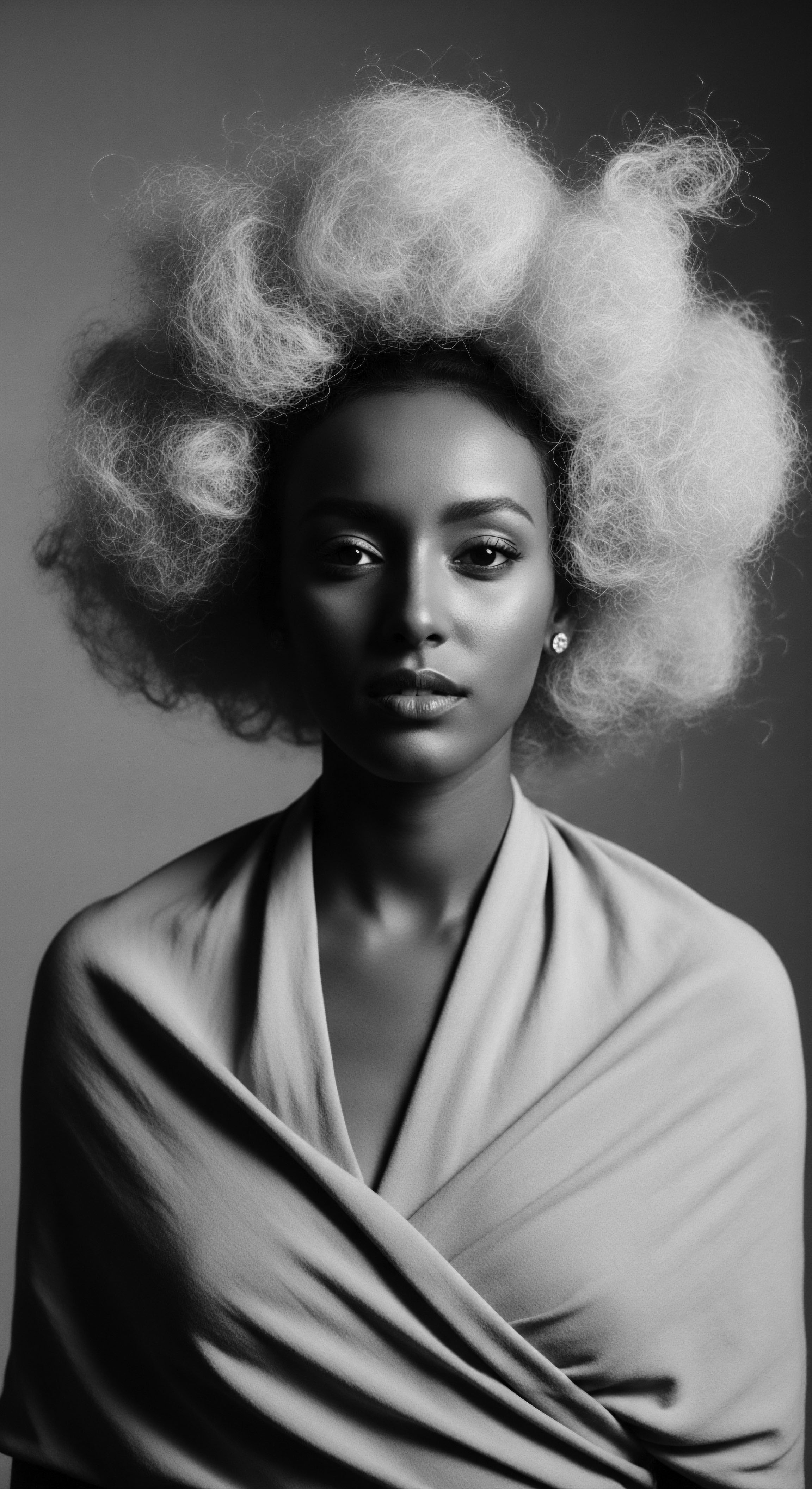
Reflection on the Heritage of Racialized Hair Bias
The exploration of Racialized Hair Bias, through its fundamental explanations, intermediate complexities, and academic scrutinies, ultimately guides us to a profound reflection on heritage. Each strand of textured hair carries echoes from an ancient source, a testament to the diverse and vibrant traditions that flourished long before the shadow of bias lengthened across continents. The coils, the kinks, the waves — they are not merely biological formations; they are living archives, imbued with the stories of ancestors, the wisdom of communal practices, and the resilience of a people who have consistently found ways to honor their innate beauty.
This bias, born of centuries past, reminds us how deeply external gazes and imposed standards can wound the spirit and fragment the sense of self. Yet, the journey of textured hair is not solely one of struggle. It is equally a chronicle of tender care, of hands that learned to braid intricate patterns, of recipes for nourishing oils passed from elder to youth, creating an unbroken, living thread of tradition. These rituals, whether performed in the intimate setting of a kitchen or the communal space of a salon, have always been more than maintenance; they have been acts of affirmation, connection, and spiritual grounding.
The fight against Racialized Hair Bias today, culminating in legislative efforts and cultural reclamation movements, is a contemporary expression of an enduring ancestral practice ❉ the right to define one’s own beauty, to wear one’s identity openly, and to celebrate the rich mosaic of inherited forms. The unbound helix of textured hair, now more visible and vocal than ever, speaks volumes of a future where authenticity is not just tolerated but revered. It is a powerful message that the true meaning of beauty resides within the individual, flowing from the deepest wellsprings of heritage, free from the confines of imposed norms. This ongoing narrative, steeped in resilience and blossoming self-acceptance, signifies a collective homecoming for the spirit, honoring the wisdom of generations and paving a path toward unconditional self-love.

References
- Byrd, Ayana D. and Lori L. Tharps. Hair Story ❉ Untangling the Roots of Black Hair in America. St. Martin’s Griffin, 2014.
- Cobb, Jasmine Nichole. New Growth ❉ The Art and Texture of Black Hair. Duke University Press, 2023.
- Dabiri, Emma. Twisted ❉ The Tangled History of Black Hair Culture. HarperCollins, 2019.
- Duke Fuqua School of Business. “Research Suggests Bias Against Natural Hair Limits Job Opportunities for Black Women.” Duke Fuqua Insights, 12 August 2020.
- Essel, S. and Akpoka, S.K. “The Artistic and Philosophical Underpinnings and Symbolic Interpretation of Ghanaian Avant-Garde Hair Designs.” International Journal of Art, Culture and Design Technologies, vol. 12, no. 1, 2023.
- Jacobs-Huey, Lanita. From the Kitchen to the Parlor ❉ Language and Becoming in African American Women’s Hair Care. Oxford University Press, 2006.
- Langat, Mercy. “Don’t Touch My Hair ❉ Examining the Natural Hair Movement Among Black Women.” Journal of African American Women and Religion, vol. 1, no. 1, 2022, pp. 71-88.
- Mbilishaka, Afiya M. “Don’t Get It Twisted ❉ Untangling the Psychology of Hair Discrimination Within Black Communities.” American Journal of Orthopsychiatry, vol. 90, no. 5, 2020, pp. 586-595.
- Rosado, Sybille. “The Grammar of Hair ❉ Identity, Ethnicity, and Hair Practices in the African Diaspora.” PhD dissertation, New York University, 2003.
- Rosette, Ashleigh Shelby, and Christy T. Dumas. “The Natural Hair Bias in Job Recruitment.” Social Psychological and Personality Science, vol. 11, no. 8, 2020, pp. 1025-1033.
